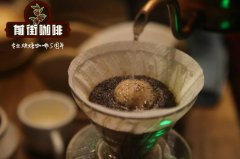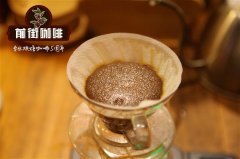Yega Sheffield Banchi Maggie Village Manor introduction what is the flavor of the manor coffee in Yiqiu Village?

Professional coffee knowledge exchange more coffee bean information please follow the coffee workshop (Wechat official account cafe_style)
In the ancient Ethiopian saying, yirga means "settle down", cheffe means "wetland", and Yirgacheffe means "let us settle down in this wetland".
Yega Xuefei is arguably one of the most famous producing areas in Ethiopia. It is located in a narrow area of Sidamo province with a height of about 2300 meters (equivalent to the height of Alishan in Taiwan). Because of its geographical environment close to mountains and lakes and coffee treatment, the coffee planted has a unique flavor, so it is independent from the Sidamo producing areas and has become one of the boutique coffee bean producing areas in Africa.
Coffee farmers harvest coffee cherries and send them to cooperative treatment stations for cleaning. The traditional Ethiopian water washing method ferments coffee beans that have been treated with skin and pulp for 72 hours, and then washes them again. The washed coffee beans are placed on a high shelf to dry, and the work will be inspected and turned constantly in the process, so as to maintain the quality.
Yiqiao Village Manor
The owner of Gesha Village is Adam Overton, an out-and-out American who was not a coffee shop owner but a documentary filmmaker.
His wife, Rachel Samuel, is Ethiopian and a photographer. The two were commissioned to shoot a documentary about coffee in Ethiopia in 2007, and their dream of building their own estate sprouted as they became more and more in touch with Ethiopian land and people.
In 2009, they met Willem Boot.
Who is he? Willem Boot, a Dutchman who runs a coffee shop in his family, emigrated to the United States and worked for Porbat, a bean baking company. In 2004, he served as a judge of BOP, and it was the first time that the Geisha variety appeared on the field. After taking a sip, he felt amazing and delicious. So in 2006, he bought La Mula, then an obscure small estate, and planted 6000 Geisha plants.
In the 2014 BOP competition, Donkey Manor took part in the competition for the first time, winning the championship and 11th place in the tanning group. Other famous manors, such as Feicui, Kotowa, Elida and so on, were defeated by this eight-year-old manor.
What Willem Boot hopes to do most is to go back to Ethiopia and find the land where Geisha was born.
Yes, Geisha is also found in Ethiopia, the source of coffee.
In 1931, the coffee variety Geisha was found in a forest called Geisha Mountain in Ethiopia.
Later, Don Pachi brought it back to Costa Rica for planting and transferred it to other estates.
At the beginning, the yield was very low, but the ability to resist mold was very strong and the trees were very high, so it was planted on the edge of many manors as a windbreak.
Until 2004, the Emerald Manor made her independent, put her on the field and became famous in the first World War.
After meeting Willem Boot, the Adam couple deepened their idea of building a Geisha estate in Ethiopia.
So they flew to Addis Ababa, the capital of Ethiopia. At first they hoped to build the manor relatively close to the capital.
But given the microclimate, soil and other natural environment they observed in Panama, they ended up in the Benzimaji region (Bench-Maji), southwest of Ethiopia, near South Sudan. There are many places in that area called Geisha Village, and it is also the area where the original Geisha is most likely to be found.
So they decided to set up their manor here and call it "Gesha Village Coffee Estate".
In 2011, Willem Boot came to the groundbreaking ceremony of the manor and served as a consultant to the manor.
Miraculously, not far from the manor, a primeval forest, known locally as Gori Geisha, discovered a native species of coffee that is very similar to La Mula manor.
The whole forest is filled with the aroma of coffee flowers. They deeply believe that this is the place where Geisha was found, and this variety is the original species. Later breed identification also confirmed this idea.
So the estate grows two types of Geisha, one of which is Gori Geisha in the forest, and the other is the 1931 species of Geisha that were first discovered.
This year, Gesha Village also made an independent bid. Lot 86 scored a high score of 87.45 on the cup test, while the first place was Geisha 1931 washing lot 80.
Flavor: grinded into delicate aromas of orange blossom, blueberry, bergamot, peach, jasmine and grapefruit. The entrance is orange blossom, blueberry, with jasmine aroma, peach, bergamot, typical geisha flavor, meticulous and elegant.
END
Important Notice :
前街咖啡 FrontStreet Coffee has moved to new addredd:
FrontStreet Coffee Address: 315,Donghua East Road,GuangZhou
Tel:020 38364473
- Prev

What is the sunrise plan for Bolivian coffee? Introduction of Saint Angel Manor Caravani, Bolivia
Professional coffee knowledge exchange more coffee bean information please follow the coffee workshop (Wechat official account cafe_style) Bolivia's "tomorrow Sun Project", that is, a plan to comprehensively promote Bolivian coffee, which requires a lot of money and effort to coach small farmers, including technical support, breeding, pruning, harvesting and other important technologies, and buy small farmers at high prices.
- Next

Brewing course of Bodi Coffee beans in Poli Village, Sheffikoche Town, Ye Jia, Ethiopia
Professional coffee knowledge exchange more coffee bean information please follow the coffee workshop (Wechat official account cafe_style) Ethiopia sun Yega Xuefei G1 Cochel Town Poli Village (Ethiopia Yirgacheffe Kochere Bolje Bonde Natural G1) flavor description: comprehensive berry, honey water, fragrant cheese, peach sweet, malic acid, fruit wine surplus
Related
- Detailed explanation of Jadeite planting Land in Panamanian Jadeite Manor introduction to the grading system of Jadeite competitive bidding, Red bid, Green bid and Rose Summer
- Story of Coffee planting in Brenka region of Costa Rica Stonehenge Manor anaerobic heavy honey treatment of flavor mouth
- What's on the barrel of Blue Mountain Coffee beans?
- Can American coffee also pull flowers? How to use hot American style to pull out a good-looking pattern?
- Can you make a cold extract with coffee beans? What is the right proportion for cold-extracted coffee formula?
- Indonesian PWN Gold Mandrine Coffee Origin Features Flavor How to Chong? Mandolin coffee is American.
- A brief introduction to the flavor characteristics of Brazilian yellow bourbon coffee beans
- What is the effect of different water quality on the flavor of cold-extracted coffee? What kind of water is best for brewing coffee?
- Why do you think of Rose Summer whenever you mention Panamanian coffee?
- Introduction to the characteristics of authentic blue mountain coffee bean producing areas? What is the CIB Coffee Authority in Jamaica?

